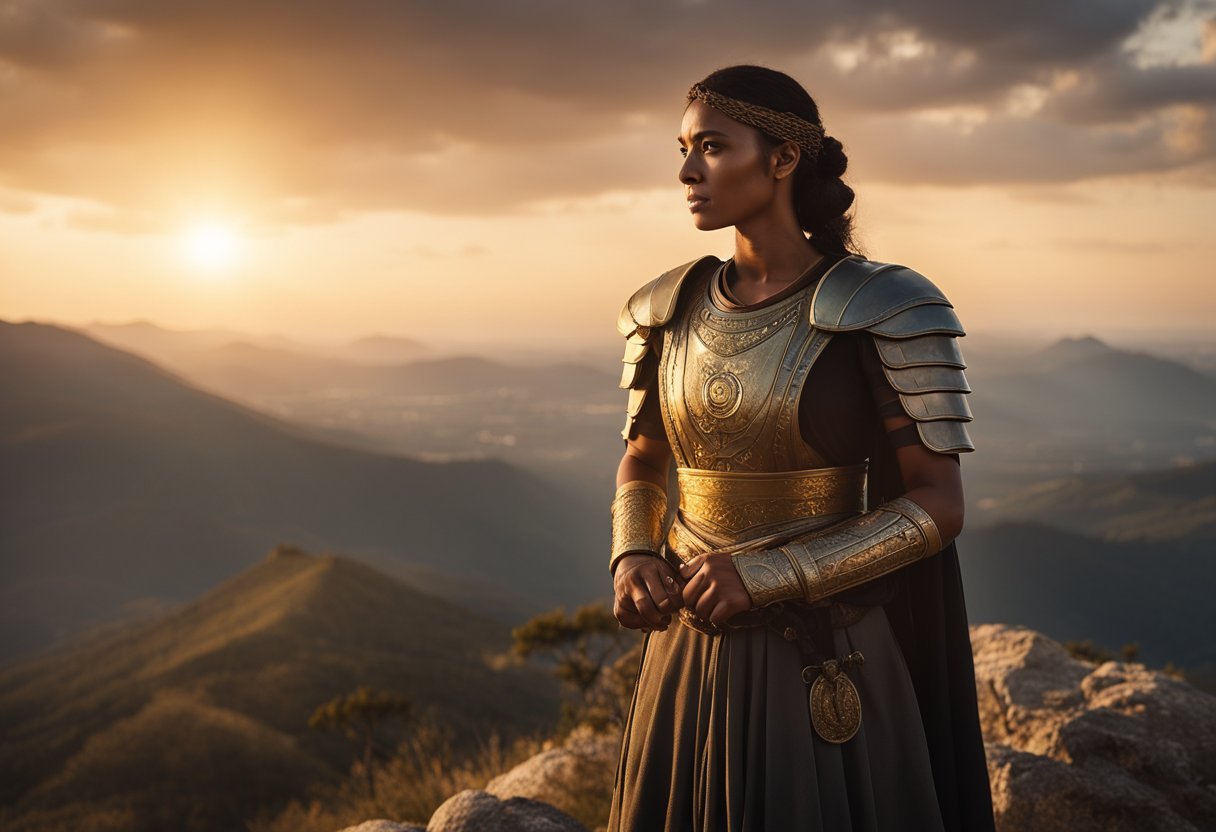Tomyris of Massagetae was a fierce and formidable queen who has captured the imaginations of historians and storytellers alike. Ruling over the Massagetae, a nomadic people known for their horsemanship and valor, she commanded respect and fear on the battlefield. Her most legendary act was the defeat and alleged beheading of Cyrus the Great, one of history’s most renowned conquerors.
Cyrus the Great, king of the Persian Empire, underestimated Tomyris and her people. His assumption that the Massagetae would be an easy conquest led to one of his gravest mistakes. In a fierce battle, Tomyris not only bested the Persian forces but made a lasting statement by placing Cyrus’s severed head in a sack full of blood, as Herodotus recounts.
Tomyris’s story is a testament to her leadership and bravery, showcasing the might and resolve of a queen who stood against one of the most powerful emperors of her time. Her resilience and tactical acumen continue to inspire those fascinated by ancient history and powerful female leaders.
Life of Tomyris

Tomyris was a queen of the Massagetae, known for her leadership and for her historic conflict with Cyrus the Great. Her early life, her rise to power, and the consequences of her battle with Cyrus shaped her legacy.
Early Life and Ascension
Tomyris’s early life in the Massagetae confederation, a pastoral-nomadic society in Central Asia, remains shrouded in mystery. Few details are known about her childhood or family background.
Despite these unknowns, she ascended to leadership, possibly inheriting her position through her lineage. Her skills and bravery earned her respect among her people, cementing her place as their queen.
Leadership and the Massagetae
As the ruler of the Massagetae, Tomyris led a society that was heavily reliant on nomadic traditions and pastoralist lifestyles. Her people were skilled horsemen, known for their archery and formidable combat abilities.
Tomyris’s leadership focused on maintaining the independence and cohesion of her tribes. She was both a political and military leader, actively participating in and directing the defense of her territories.
Conflict with Cyrus the Great
Tomyris is most famous for her confrontation with Cyrus the Great, the founder of the Achaemenid Empire. After Cyrus’s conquest of Babylon, he set his sights on the Massagetae territory.
A major battle ensued, during which Tomyris’s son, Spargapises, was captured by the Persians. In his despair, he committed suicide, an event that fueled Tomyris’s resolve. She eventually defeated Cyrus, allegedly beheading him and placing his head in a vessel of blood.

Aftermath and Legacy
After her victory over Cyrus, Tomyris became a symbol of resistance and strength. Her story resonated across generations, depicting her as a powerful and vengeful leader who protected her people at all costs.
Her legacy persisted through historical accounts, like those of Herodotus, and through various artistic representations, ensuring that her name and deeds were remembered long after her reign.
Cultural and Historical Impact
Tomyris of Massagetae has left a lasting legacy in both ancient historical narratives and modern interpretations. Her clash with Cyrus the Great has been depicted in various artistic and literary works and continues to be a symbol of strength and resistance.
Depictions in Art and Literature
Tomyris has been a fascinating subject for artists and writers throughout history. In a 1670-1672 painting, Queen Tomyris is depicted receiving the head of Cyrus the Great, symbolizing her triumph. Her story is also recounted by the ancient historian Herodotus, who details the fierce battle where she avenged her son’s death by personally killing Cyrus.
These representations highlight her brave and vengeful nature and have kept her legacy alive through the centuries. Authors and historians frequently revisit her story, admiring her role as a powerful female leader in a predominantly male-dominated world.
Modern Symbolism and Interpretations
Today, Tomyris is often seen as a symbol of resistance and feminist strength. Modern interpretations of her story draw parallels to contemporary themes of gender and power. For instance, her defiance against a powerful empire serves as an inspiration for those who feel marginalized or oppressed.
In some cultures, she represents the archetype of a warrior queen protecting her people at any cost. Her narrative has been utilized in discussions around female empowerment and leadership, showcasing that strong women have always existed throughout history.
This continuous reinterpretation ensures that her story remains relevant, resonating with new generations who seek examples of resilience and courage.

